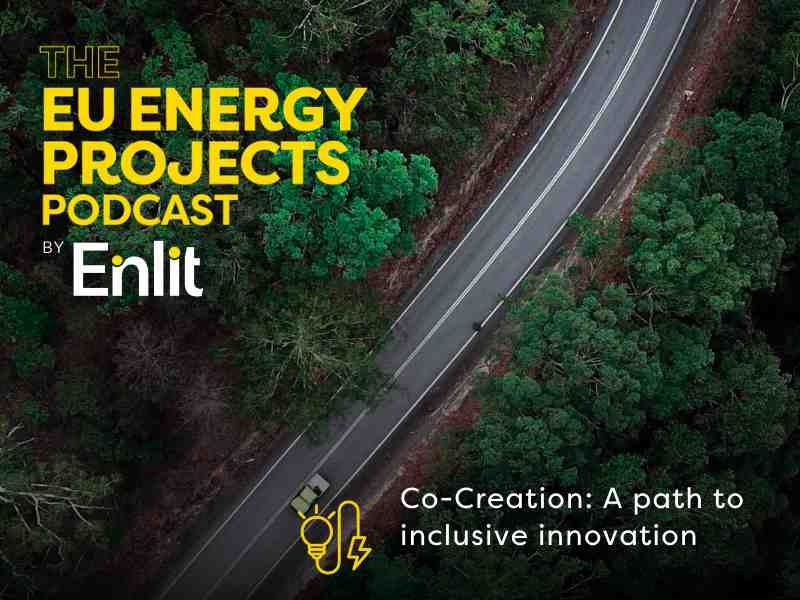
In honour of International Women’s Day, the EU Energy Projects podcast team recorded a special episode with our very own Aggeliki Aggeli to discuss co-creation and innovation in EU-funded energy projects.
Aggeliki Aggeli, Researcher at BUILD, Aalborg University, and member of the DECODIT project’s consortium, is an expert in participatory methodologies. As such, she provided valuable insights into the importance of co-creation, its challenges and the role of diversity in innovation.
What is co-creation?
Co-creation, as Aggeliki describes it, is a collective process that brings people together to generate shared value.
“Co-creation allows the meeting of different perspectives and opinions in the same space that in some cases wouldn’t otherwise meet,” she explained.
This methodology fosters inclusive dialogue, incorporating both technical expertise and experiential knowledge, which helps democratise innovation by making services, products and processes more accessible to communities.
Although at first sight, the word is self-explanatory, I admit that, at least in the context of energy projects, that was news to me.
Listening to Aggeliki speak about co-creation, I could not help but appreciate the deeper significance of this approach, as – if I understood it correctly – it’s about more than just collaboration; it’s about building trust, fostering inclusion and creating lasting impact.
Her passion for empowering communities shines through, making it clear that co-creation is not just a theoretical concept but a real, tangible process that has the power to change lives.
Co-creation in practice – opportunities and challenges
In EU-funded energy projects, such as the Horizon initiative DECODIT, co-creation plays a crucial role in ensuring community engagement and ownership of sustainable solutions.
“Co-creation is an important activity; as a collective activity in communities, it is valuable for generating mutual learning, knowledge sharing, and, very importantly, achieving joint ownership of solutions,” Aggeliki emphasised.
However, she also pointed out the challenges in implementing these processes, particularly managing expectations from both organisers and participants at the outset.
A key aspect of co-creation in energy projects is the integration of digital tools. These technologies assist citizens in managing energy consumption, visualising data and making informed decisions about sustainability.
However, as Aggeliki notes, their effectiveness depends on additional factors such as user competence and the societal understanding of their purpose.
“In order for these tools to be meaningful and to contribute to sustainable change, they need to be supported by relevant understandings. Why do we need these tools, and how can we develop the skills to use them?” she remarked.
Gender diversity in the energy sector – barriers and progress
The conversation also touched upon gender diversity in the energy sector, which remains male-dominated. Women in leadership and technical roles often face barriers, including a lack of visible role models and mentorship opportunities.
“There need to be more mentorship programmes, more ways for women to see the success stories of others, and to network more to avoid stereotyping,” Aggeliki stated. Encouraging women to pursue STEM (science, technology, engineering, and mathematics) from an early stage is essential to ensuring long-term diversity in leadership roles.
But diversity in the energy sector is not just about representation. It also enhances innovation and decision-making.
“By increasing diversity, we develop a more just and fair process of representation. Engaging diverse experiences enriches our understanding of why things happen and why they should happen in specific contexts,” Aggeliki explained. A gender-sensitive approach to technological design and strategic planning ensures that solutions are more inclusive and effective for all members of society.
And as she pointed out: “This effort needs to be translated into different aspects, including the design of technologies, the way information is communicated, and the language we use in addressing communities.” It’s about being intentional in every step of the process, whether in innovation, leadership or community engagement.
Listen to the podcast below
